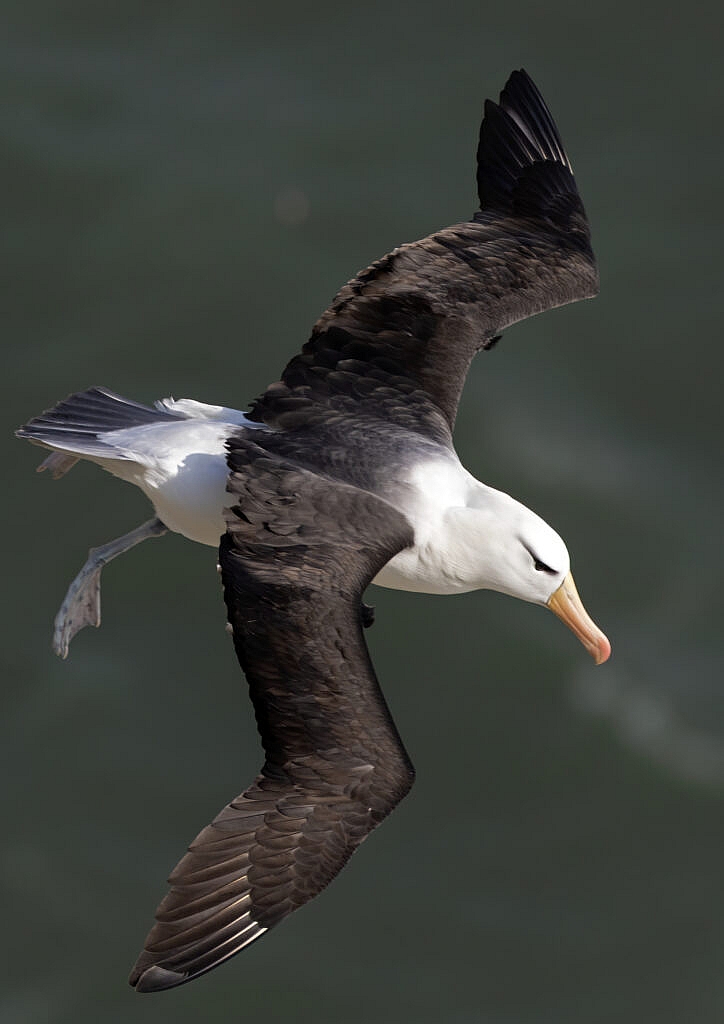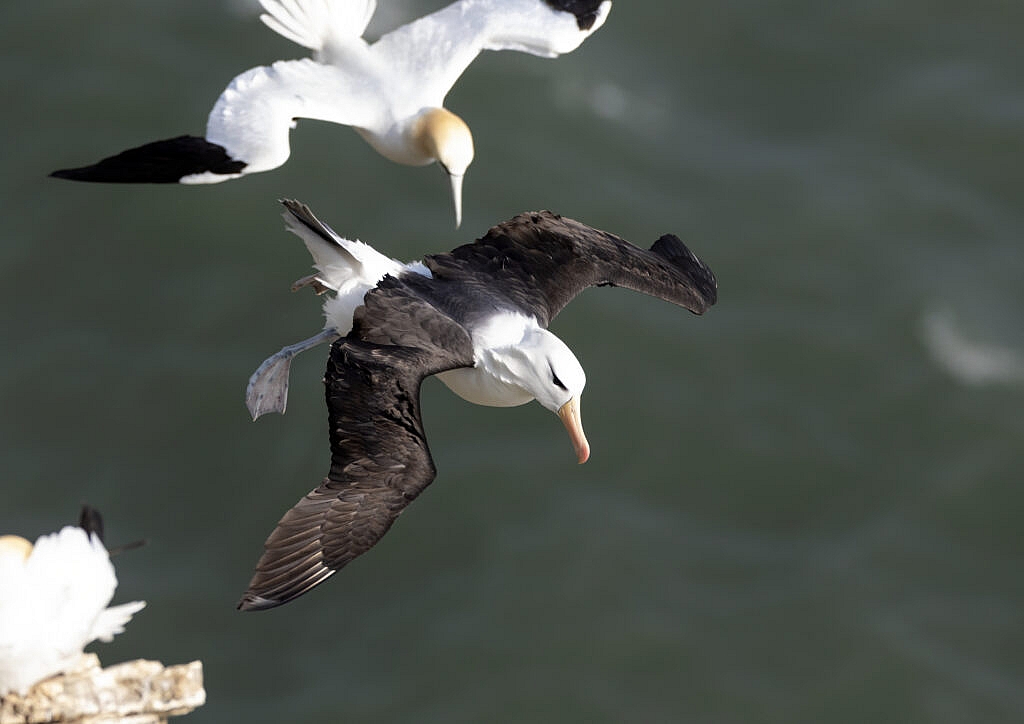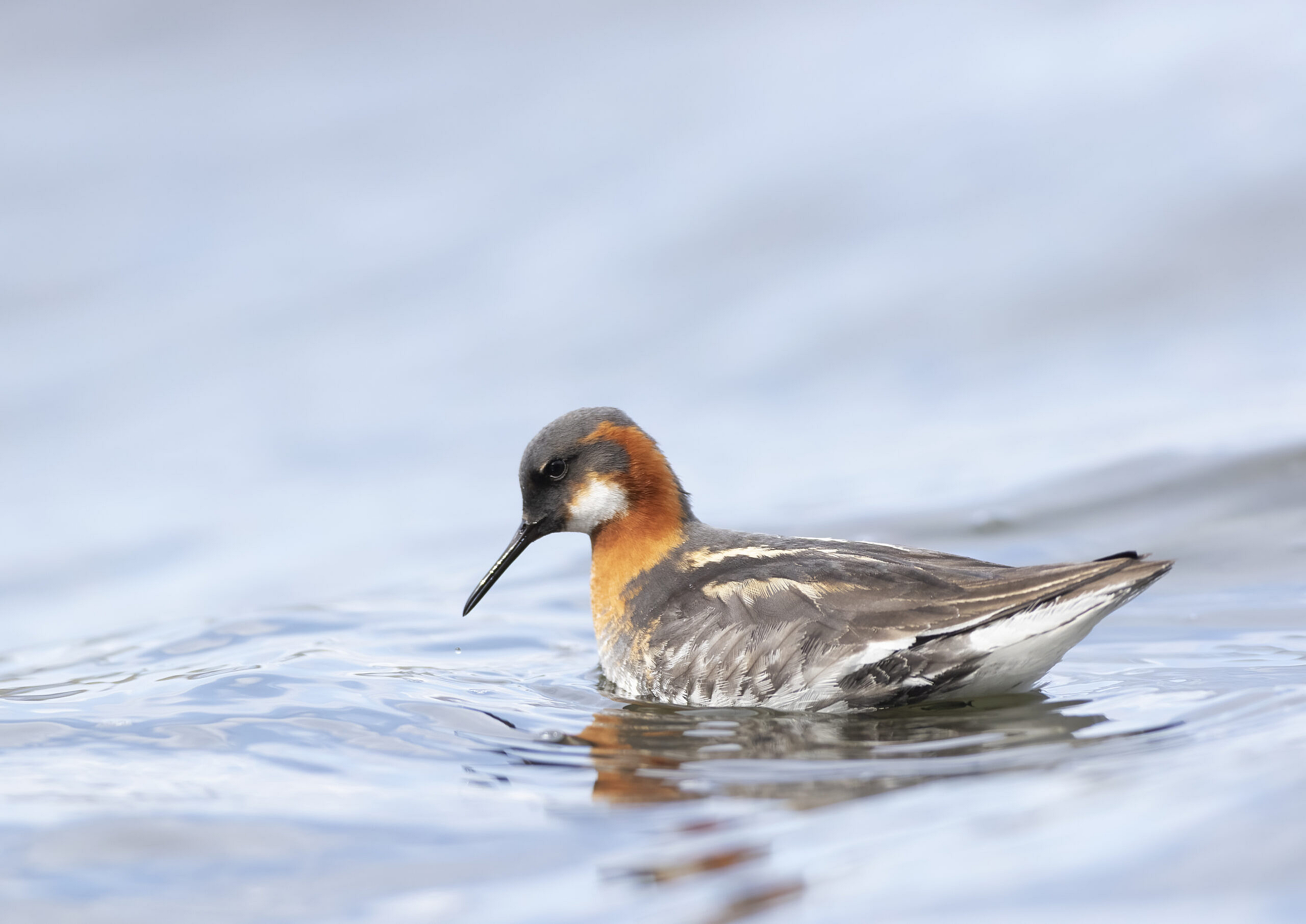Ever since the earliest days of man, people have set to sea in boats. I’m personally not good with boats or ships – my idea of the smallest thing you should go to sea in is the Isle of Wight – but I appreciate that others don’t share that view. I’ve often wondered how it must feel to be far out at sea with no sight of land, facing whatever the sea and wind can throw at you. How easily you might get lost, how resilient you have to be when there is no safe harbour you can return to.
At the weekend I met the ultimate wanderer of our oceans, a bird for whom the absence of any sight of land is all in days’ (or a weeks’, or a months’) work – Albert, the black-browed albatross. Black browed albatross are a species under relatively little threat, and can be a fairly common sight – if you live and work in the Southern Ocean near the Antarctic. This is bird which breeds on the Falklands and other circumpolar islands wanders perhaps as a far as Brazil during the Arctic winter. But sometime in 2014, Albert (who may be Albertina) took a wrong turn. Whether driven by a storm, a faulty satnav or just a desire to see the world, Albert left not only his normal home, but his normal hemisphere and showed up in the Baltic seas around Germany and Denmark before falling in with the large crowd of Gannet, another long-winged seabird – who return every year to nest on the steep cliffs of RSPB Bempton cliffs in East Yorkshire. I arrived at the spot where it had last been seen after a puffed and hurried half-walk, half run from the car park, and I am so glad that I put in that bit of extra effort, because I got to the cliffs just as Albert lifted into the air. It was effortless. Bempton is breezy on the best of days, and this day there was enough wind that a couple of small wind turbines could have kept Leeds running. It was so string that Albert kept those fabulously long wings bent. There was no flapping involved as he circled once, twice, then headed out to sea. By four pm, when I left, he had still not returned. But I managed to get a close look at the velvety-black perfection of those wings, the pristine white head and neck, and those fabulously crisp black brows.

Albert, whose scientific name (Thalassarche melanophris) means “black eyebrowed commander of the sea”, has a wingspan somewhere between seven and eight feet (210-250cm). This astonishing bird probably flew some eight thousand miles over open ocean to get to Bempton. Now I know some folk who can’t make it to Benidorm on a 20Kg baggage allowance, so how on earth did he/she do it? Well, part of the answer is that Albatross fly over a dining room. They can plunge-dive after fish, but prefer to take their food from the water surface. At night, when they sleep on the ocean surface, they can take species like squid. During the day, they feed on surface shoals of fish, or swarms of krill, the same small shrimp-like crustaceans that feed many of the ocean’s other restless wanderers, like the whales. They are not averse to carrion, either – the odd whale carcass or dead penguin that they may find en route. Their energy demands are surprisingly small – those vast wings and the strength of ocean winds allow them to stay aloft following a soar-and-dive pattern with barely a wingflap. So that’s the bed and the food sorted out, but what about water? What does a bird drink when flying a third of the way around the world? The answer, surprisingly, is sea water. While a stranded human would die very quickly from drinking salt water, the albatross has two salt-secreting glands (the ‘Supraorbital ‘ glands) that excrete excess salt from the blood. This way they can get rid over almost all the salt they drink within three hours, and keep the salt levels in its blood within tolerable levels. The black-browed albatross’s glands open on either side of the beak – in theory so that as they fly, the hyper-salty solution they exude doesn’t get into the bird’s eyes.
With these adaptations, albatrosses can fly the world’s oceans. Albert seems to feel right at home in Yorkshire, as this is his third year joining the gannet colony there. But make the most of the opportunity, as Albert’s days may be numbered. We know that Albert is an adult bird because there is no hint of grey on his collar or black on its beak. While an albatross will typically live for 30 years (some have been recorded at 70 years) they don’t start to breed until age 7, when they will return to where they were born to breed. So if you get the chance to see Albert, take it. It is likely that in a year or two, Albert may return to the southern ocean, probably South Georgia or the Falklands. And since albatross are monogamous and faithful partners, it is unlikely that Albert will ever head this way again.





Social Profiles